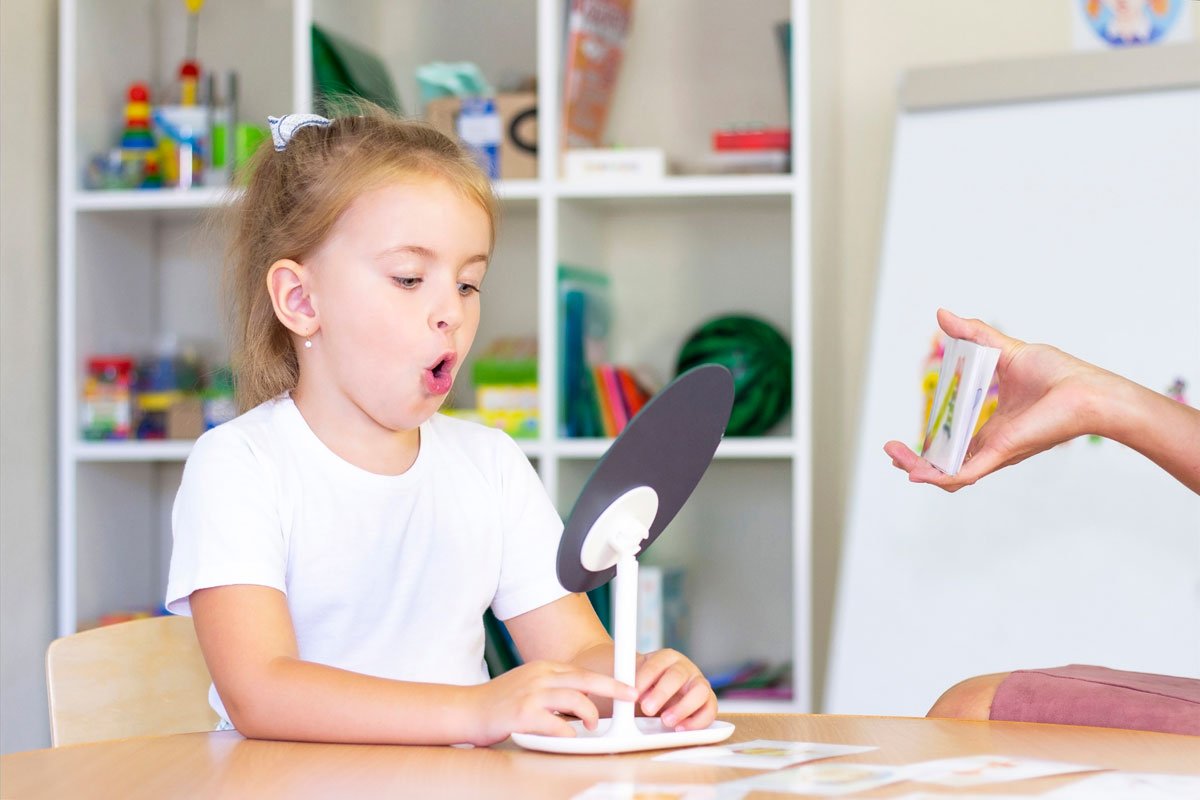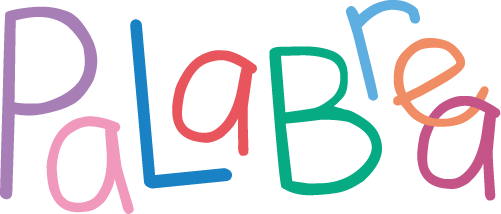Each patient and environment encompasses a unique and special part of our work. For this reason, we seek to provide the support and guidance they need in each therapy session to ensure their progress is as satisfactory as possible.
That is why all sessions are individualised; each condition has its own special characteristics, and providing the right treatment is essential for us.

At Palabrea, we work in
4 main areas of intervention:
At Palabrea, we work in
4 main areas of intervention:
Simple language delay
Delay in a child’s language development compared to the average for their age group.
Language development disorders (LDD).
Both in the emergence and development of all levels of language in terms of expression and comprehension.
Dyslexia
Difficulty in reading and writing, which implies slower development in mastering reading and writing, preventing the pace of learning from being adapted to their age.
Dyscalculia
Difficulty with calculation and logical reasoning, resulting in slower development and preventing learning from keeping pace with their age.
Speech delay
Delay in the onset and development of speech relative to chronological age.
Speech sound disorders (SSD)
Mainly in the articulation of the sounds of certain phonemes. For example, the most common are the phonemes /r/ and /θ/.
Dysphemia
It is a fluency disorder characterised by interruptions, blocks or repetitions. It mainly affects the rhythm and melody of speech.
Other voice disorders
Such as dysphonia, nodules, polyps… It is characterised by an alteration in the acoustic quality of the voice, either due to an organic disorder, incorrect use of the voice or vocal overexertion.
Orofacial myofunctional therapy
Techniques and procedures used to rectify misuse and correct potential problems with the orofacial muscles resulting from poor dental positioning or imbalances in adjacent bone structures.
Atypical swallowing
Incorrect positioning and movement of the tongue when swallowing, resulting in misaligned and displaced teeth, requiring orthodontic treatment in the long term.
Dysphagia
A condition that affects the formation and movement of food from the mouth to the oesophagus, i.e. difficulty swallowing food.
Other temporomandibular joint disorders
Aphasias
A disorder that affects the ability to communicate, speak, read, or write. It can occur after a head injury, stroke, traumatic brain injury, or cerebrovascular accident in which the areas of the brain responsible for these functions have been damaged.
Neurodegenerative diseases: Alzheimer’s, Parkinson’s, multiple sclerosis…
Cognitive disorder that, following a process of cell death, causes alterations in speech, breathing, movement, swallowing, etc.
Autism spectrum disorder (ASD)
A neurodevelopmental disorder that affects the configuration of the nervous system and brain function. Difficulties are observed in social interaction and communication in all of the person’s environments, as well as in their behaviour and flexibility of thought in some situations.
Augmentative and alternative communication
A discipline dedicated to helping people who need assistance with communication. Augmentative and alternative communication systems aid understanding and expression, as well as providing complementary support for language development.
School support and study techniques
Appropriate for age and academic year.
En Palabrea trabajamos en
4 áreas principales de intervención:
Simple language delay
Delay in a child’s language development compared to the average for their age group.
Language development disorders (LDD)
Both in the emergence and development of all levels of language in terms of expression and comprehension.
Dyslexia
Difficulty in reading and writing, which implies slower development in mastering reading and writing, preventing the pace of learning from being adapted to their age.
Dyscalculia
Difficulty with calculation and logical reasoning, resulting in slower development and preventing learning from keeping pace with their age.
Speech delay
Delay in the onset and development of speech relative to chronological age.
Speech sound disorders (SSD)
Mainly in the articulation of the sounds of certain phonemes. For example, the most common are the phonemes /r/ and /θ/.
Dysphemia
It is a fluency disorder characterised by interruptions, blocks or repetitions. It mainly affects the rhythm and melody of speech.
Other voice disorders
Such as dysphonia, nodules, polyps… It is characterised by an alteration in the acoustic quality of the voice, either due to an organic disorder, incorrect use of the voice or vocal overexertion.
Orofacial myofunctional therapy
Techniques and procedures used to rectify misuse and correct potential problems in the orofacial muscles resulting from poor dental positioning or imbalances in adjacent bone structures.
Atypical swallowing
Incorrect positioning and movement of the tongue when swallowing, resulting in misaligned and displaced teeth, requiring orthodontic treatment in the long term.
Dysphagia
A condition that affects the formation and movement of food from the mouth to the oesophagus, i.e. difficulty swallowing food.
Other temporomandibular joint disorders
Aphasias
A disorder that affects the ability to communicate, speak, read, or write. It can occur after a head injury, stroke, traumatic brain injury, or cerebrovascular accident in which the areas of the brain responsible for these functions have been damaged.
Neurodegenerative diseases: Alzheimer’s, Parkinson’s, multiple sclerosis…
Cognitive disorder that, following a process of cell death, causes alterations in speech, breathing, movement, swallowing, etc.
Autism spectrum disorder (ASD)
A neurodevelopmental disorder that affects the configuration of the nervous system and brain function. Difficulties are observed in social interaction and communication in all of the person’s environments, as well as in their behaviour and flexibility of thought in some situations.
Augmentative and alternative communication
A discipline dedicated to helping people who need assistance with communication. Augmentative and alternative communication systems aid understanding and expression, as well as providing complementary support for language development.
School support and study techniques
Appropriate for age and academic year.
After a personalised analysis of your difficulties and needs, an environment tailored to your preferences is created so that the intervention can be carried out in a smooth and relaxed manner.
Our approach consists of working collaboratively with all the people and professionals involved in the patient’s environment.
We use play as our main intervention tool, seeking the patient’s full development.
We use topics of interest or related to the workplace, seeking to maximise potential in these areas of work.
To facilitate intervention in both children and adults, adapting to their specific needs at the time. For example: elderly people with reduced mobility, stroke, acquired brain damage, Parkinson’s disease, Alzheimer’s disease, multiple sclerosis, cerebral palsy, etc.
At Palabrea, we understand the importance of assessment and early, accurate diagnosis in order to subsequently provide personalised treatment that addresses the needs of the patient and their entire environment.
Sessions can last 30 or 45 minutes depending on the observed need and type of treatment.
After the assessment and once the objectives have been set, a frequency of 1 to 2 sessions per week will be proposed. This may vary depending on each case.
This question is frequently asked, but it is impossible to determine since each case is different and the influencing factors must be taken into account.

If you require further details or additional information, please do not hesitate to contact us through any of the following channels.
We look forward to seeing you soon!

Si necesitas más detalles o información adicional, no dudes en ponerte en contacto a través de cualquiera de los siguientes medios.
¡Esperamos verte pronto!